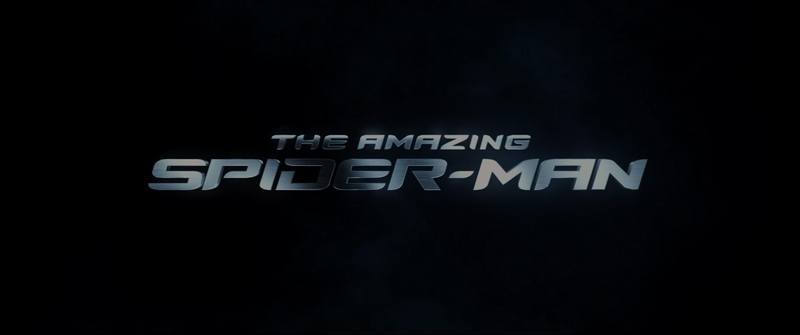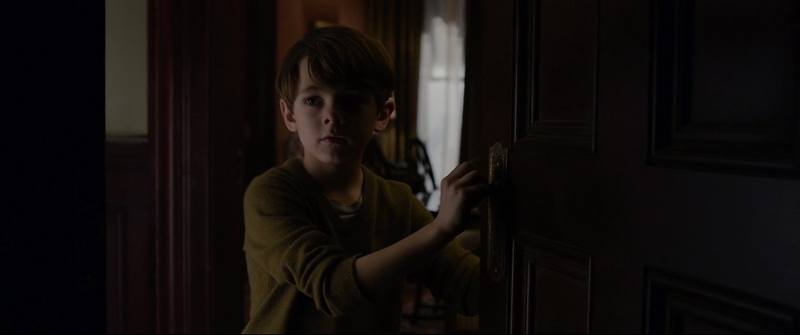[divider]“James Horner on a super-hero movie!?”[/divider]
Astonishment and questioning. Such were our both reactions nine months ago, while we were waiting for Black Gold, when the composer’s long-time editor Jim Henrikson announced the possible involvement of James Horner to the new theatrical adaptation of Spider-Man.
Astonishment, first, as this is clearly not a universe into which the composer is used to venturing. If we pay close attention to his filmography and if we exclude The Mask Of Zorro, out of more than hundred films he did only one film based upon a comics character, i.e. an avenger who distinguish him/herself in his/her extraordinary abilities or in the use of a specific equipment. It was back in  1991 and the film was called The Rocketeer, for which he had delivered a high-level symphonic work, to underscore the aerial accomplishments of Cliff Secord, a young stunt-man, an avid aviation enthusiast who discovers a mysterious small rocket that can make him fly freely.
1991 and the film was called The Rocketeer, for which he had delivered a high-level symphonic work, to underscore the aerial accomplishments of Cliff Secord, a young stunt-man, an avid aviation enthusiast who discovers a mysterious small rocket that can make him fly freely.
 1991 and the film was called The Rocketeer, for which he had delivered a high-level symphonic work, to underscore the aerial accomplishments of Cliff Secord, a young stunt-man, an avid aviation enthusiast who discovers a mysterious small rocket that can make him fly freely.
1991 and the film was called The Rocketeer, for which he had delivered a high-level symphonic work, to underscore the aerial accomplishments of Cliff Secord, a young stunt-man, an avid aviation enthusiast who discovers a mysterious small rocket that can make him fly freely.
Questions abound, as we were curious about how James Horner would tackle such an unusual genre. In which direction would his music go? Would he be able to stand apart from Danny Elfman and Christopher Young who had scored Sam Raimi’s previous trilogy? Would he be able to once again impose his own style on a big production that seldom leaves flexibility to the composer and which on the contrary demands a formatted style based upon previous acclaimed scores? This sounded like a huge challenge, especially because The Amazing Spider-Man would start with two handicaps:
First, it starts all over again a franchise that was recently adapted theatrically  (Spider-Man 3 was in 2007) and will therefore be severely criticized by all those who enjoyed the previous trilogy. The proximity between these productions opens the door for comparisons and wanton denigrations.
(Spider-Man 3 was in 2007) and will therefore be severely criticized by all those who enjoyed the previous trilogy. The proximity between these productions opens the door for comparisons and wanton denigrations.
 (Spider-Man 3 was in 2007) and will therefore be severely criticized by all those who enjoyed the previous trilogy. The proximity between these productions opens the door for comparisons and wanton denigrations.
(Spider-Man 3 was in 2007) and will therefore be severely criticized by all those who enjoyed the previous trilogy. The proximity between these productions opens the door for comparisons and wanton denigrations.
Secondly, it comes on a movie market already inundated by Marvel’s superhero stories, the enjoyment of which arouses the highest expectations. Over the past few years we have indeed had adaptations as diverse as X-Men, The Fantastic Four, Hulk, Ghost Rider, Iron Man, Thor, Captain America and most recently The Avengers. By uniting part of the superheroes in one story, the latter ranked the third biggest financial success in the cinema history.
Even if the excitement of the younger generation for the web-slinger's adventures guaranteed a success in theaters, the two above elements made such reboot quite risky. Spider-Man is one of the most popular characters in American comics. Just like the film, the music by James Horner was eagerly expected.
"I'm just not as eager to do all those kind of action movies that we had talked about. I look for sort of very small things, gems that are probably not that commercial, but things that I like to do for my heart, and the filmmakers want that kind of approach, and every now and then a big film will come along, but so much money now is being put into big films that follow a set of instructions and whether it's called "Iron Man" or "Spider-Man" or "Green Lantern", they all sort of have a spectrum of sounds and approaches that are expected and you can be creative but it's hard to stick out from the crowd in that world. "James Horner (2010) – Interview by David Poland (Movie City News & The Hot Blog)
For a better understanding, throughout our analysis we will follow the chronological order of the cues as they appear in the film. Indeed, unlike their sequencing on the disc, cues 2 to 4 appear much later in the film. The dynamic Becoming Spider-Man and the fun Playing Basketball were undoubtedly put ahead so as to enliven and diversify the beginning of the album. Without affecting the cohesion of the work, this positioning nonetheless alters slightly the musical and dramatic construction of the score. Secrets, The Equation and Metamorphosis are sequenced in the film for dramatic and storyline purposes, whereas such an imperative was no longer needed on the album. We think it may be interesting to favor the film’s order so as to catch any subtleties of the musical narration created by the composer.

[divider]A new kaleidoscope[/divider]
In human relationships, first impressions are everything. So are the first seconds of a film and of a piece of music. That first contact leads to judgment and appreciation. James Horner understood this and already explained it: he said that a modicum of mystery should remain about the sound of the music. This is why he has always paid attention to the first cues of his scores. To be convinced of that, just think for instance of the condensed virtuosity at the beginning of Plaza Of Execution (The Mask Of Zorro) or The Machine Age (Bicentennial Man). The cue Main Title / Young Peter, subtly opening The Amazing Spider-man with a controlled strain is no exception.
It starts with a synthetic sound. A sound reminiscing of a violin with an artificial voice coming from it and which plays practically the same note. The effect of confusion thus created fosters a strange atmosphere, perfect for the Columbia Pictures logo on screen. Then a second voice rises and the whole sounds like the first cries of a newborn baby. This is the first breath of life, the birth of a super-hero. It is like a big breath of fresh air before venturing into a musical challenge – telling the origins of the web-slinger. As imagery from Marvel comics scroll on screen, the piano develops a progressive motif, the common thread of the cue and of the first part of the score. First fast paced, its execution is slightly reminiscent of the piano of James Newton Howard’s Signs (The Hand of Fate 2). The notes, similar to those heard in Playing A Game Of Go in A Beautiful Mind, are the first non-synthetic material of the music, making it evolve. The synths are however not forgotten as pulses start at the same time as the piano and accompany it in its progression. Within a few seconds, James Horner establishes the primary sound of his score – the blend of orchestral and electronic music. This has of course always been the case for thirty years, but with Avatar, The Karate Kid and the arrival of composer-arranger Simon Franglen in his team, this duality seems to have taken a new approach and experiences another great development here.

Fragments of the spider-man theme appear out of this material with four notes of trumpet. It gradually unveils before it fully shows up at 0:57, seven seconds after the apparition of the film’s title on screen, within an electronic surge participating to the outbreak of the melody. And this charming melody, which catches the ear immediately, wonderfully depicts the heroism of Spider-Man’s future adventures. Like a jingle conditioning the audience, this genuine leitmotif for the character will have several variations along the nearly 80 minutes of the album, depending on the situations. To ensure perfection, the composer continues this part of the theme (from 1:24 to 1:48) just for the album, whereas in the film the music goes directly to the quieter moment at 1:50 to introduce the first scene.
The piano motif resurfaces but gets slower to leave place to a soft trickle of strings, backing Luca Franglen’s angelic voice, who was previously heard in Becoming One The People (Avatar). This represents the childhood of Peter Parker, as he plays hide and seek with his parents through the rooms of their house.

At 2:15, the strings start a reminiscence of You Don’t Dream In Cryo (Avatar), announcing a darker atmosphere as the child enters his father’s burgled office. It is not playtime anymore. At 2:50 Dhafer Youssef’s voice and the cellos magnify the worrying situation: “Who broke in? In what purpose? Where are my parents?” – so many questions that seem to cross the young boy’s mind. At 3:17, with hammering pianos and synth percussion, Richard Parker panics and grabs his son to quickly leave the home, which was peaceful and secure a few moments ago.
The music now seems to progress like spider legs on the floor. Where Danny Elfman explored the percussion for such arachnid moves, James Horner chose the piano, one of his favorite instruments that he often likes to augment. Thus several pianos play superimposed to offer a rich and percussive ornamentation.
The escape goes on with strings coming from The Karate Kid (Backstreet Beating at 1:21) when the family drives through town to find shelter at Uncle and Aunt May's. At 4:05, the transition is once again heard with a piano, which now has a colder and more worrying color, like the mystery surrounding the reasons why Peter Parker's parents leave the boy to his uncle and aunt.
"This cue lays the foundation for the rest of the score, it’s a kaleidoscope of elements which, each in turn, will inform the music." 1
Eleven years later, James Horner’s comments on A Beautiful Mind’s title sequence carry over quite nicely to The Amazing Spider-Man. The piano motif, the main theme and the emotional theme again are the cornerstones of the score and make striking appearances in the selection of nineteen cues.
Continued on page 2



